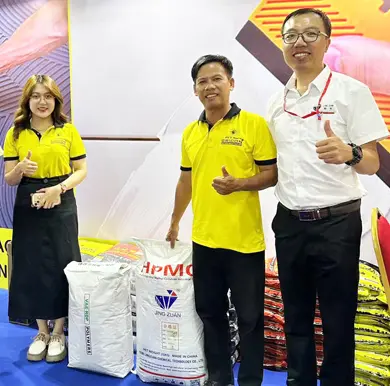
Dec . 01, 2024 05:28 Back to list
Applications and Benefits of Hydroxypropyl Methylcellulose in Various Industries
Exploring Hydroxypropyl Methylcellulose The Versatile Polymer in Modern Applications
Hydroxypropyl methylcellulose (HPMC) is a synthetic, non-ionic polymer belonging to the cellulose ether family. It is derived from cellulose, which is obtained from natural sources such as wood pulp and cotton, and modified to enhance its solubility and functionality. This versatile compound has found extensive applications across various industries, including pharmaceuticals, food, construction, and cosmetics, making it one of the most widely used cellulose derivatives in the world.
Chemical Structure and Properties
HPMC is produced by the hydroxypropylation and methoxylation of cellulose. The degree of methoxy and hydroxypropyl substitution can be adjusted during the manufacturing process, influencing the polymer’s physicochemical properties. The result is a white to off-white powder that is odorless and tasteless, with remarkable film-forming, thickening, and emulsifying capabilities. HPMC is soluble in water and forms clear, viscous solutions that can stabilize emulsions and suspensions, a feature highly desirable in many applications.
Pharmaceutical Applications
In the pharmaceutical industry, HPMC is widely used as an excipient in tablet formulations. Its ability to form gels upon hydration makes it an excellent binder and controlled-release agent, allowing for the gradual release of active ingredients over time. This property enhances the bioavailability of poorly soluble drugs, making HPMC a critical component in modern drug delivery systems. Additionally, HPMC is utilized in the preparation of capsules and as an additive in topical formulations due to its adhesive properties.
Moreover, HPMC is considered safe for human consumption and is often used in dietary supplements. Its non-toxicity and biocompatibility further establish HPMC as a valuable ingredient in pharmaceutical formulations.
Food Industry Applications
hydroxypropyl methylcellulose

In the food industry, HPMC is employed primarily as a food additive. It functions as a thickener, stabilizer, and emulsifier in various products, including sauces, dressings, and baked goods. Its capability to improve texture and consistency is particularly crucial in gluten-free products, where it mimics the elastic properties of gluten. By adding HPMC to gluten-free flour blends, manufacturers can enhance the quality of baked goods, achieving a more palatable and acceptable texture.
HPMC is also used in low-fat and reduced-calorie food products, providing a satisfying mouthfeel without adding additional calories or fat. This versatility makes HPMC invaluable in meeting the growing consumer demand for healthier food options.
Construction and Cosmetic Applications
In the construction industry, HPMC is incorporated into cement-based products, such as mortars and plasters, where it enhances workability and adhesion. It improves the water-retention properties of these mixtures, allowing for extended open times during application and ensuring a stronger, more durable end product.
In cosmetics and personal care products, HPMC serves as a thickening agent, stabilizer, and film former. It is commonly used in lotions, creams, shampoos, and gels, providing desirable textures and enhancing product stability. Its gentle nature makes it suitable for sensitive skin formulations, reducing the risk of irritation.
Conclusion
Hydroxypropyl methylcellulose is a multifaceted polymer with a broad spectrum of applications that span various industries. Its chemical versatility, along with safety and effectiveness, solidifies its status as a crucial ingredient in pharmaceuticals, food products, construction materials, and cosmetic formulations. As research continues to unveil new applications and benefits of HPMC, its role in innovation and product development is only expected to grow. For industries looking for sustainable and effective solutions, hydroxypropyl methylcellulose stands out as a prime candidate for addressing modern challenges while enhancing product quality and performance.
-
Versatile Hpmc Uses in Different Industries
NewsJun.19,2025
-
Redispersible Powder's Role in Enhancing Durability of Construction Products
NewsJun.19,2025
-
Hydroxyethyl Cellulose Applications Driving Green Industrial Processes
NewsJun.19,2025
-
Exploring Different Redispersible Polymer Powder
NewsJun.19,2025
-
Choosing the Right Mortar Bonding Agent
NewsJun.19,2025
-
Applications and Significance of China Hpmc in Modern Industries
NewsJun.19,2025







